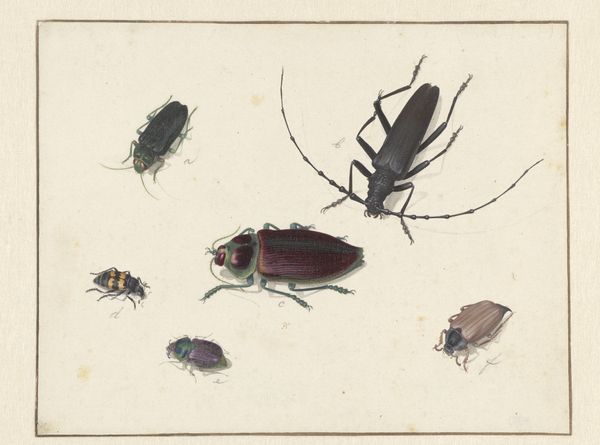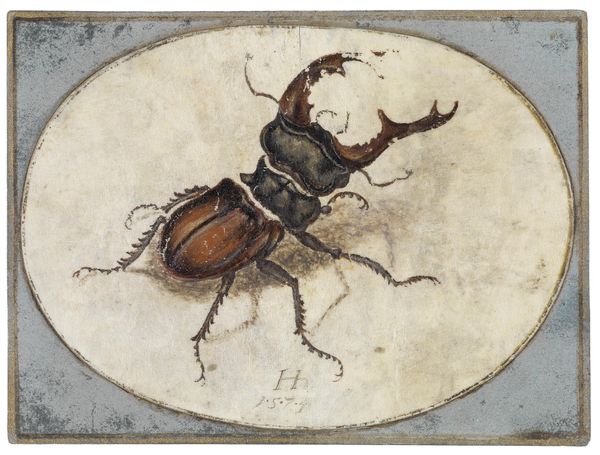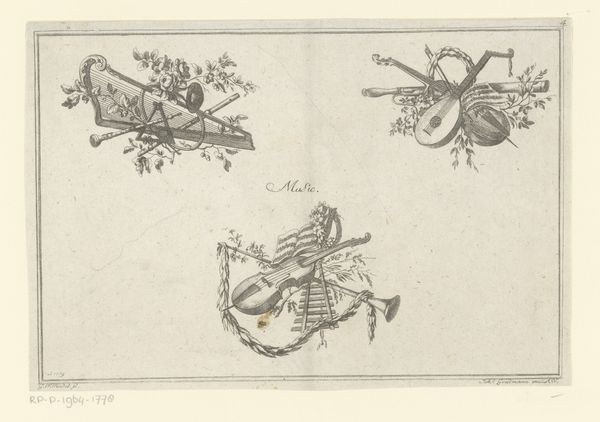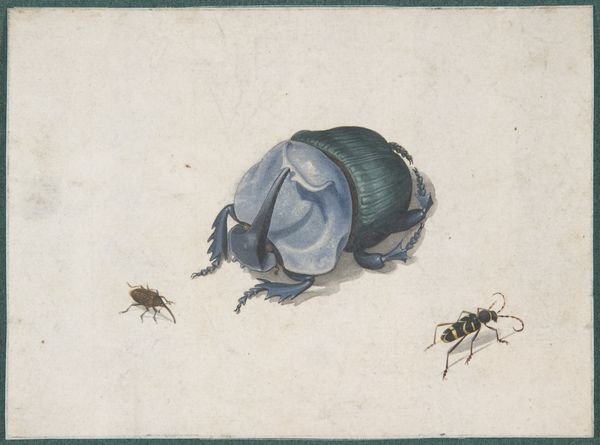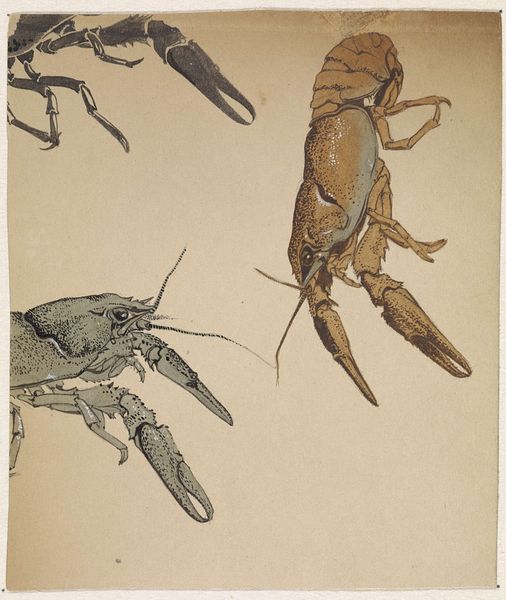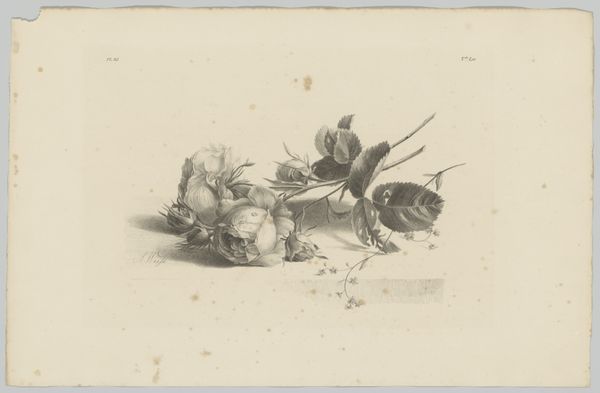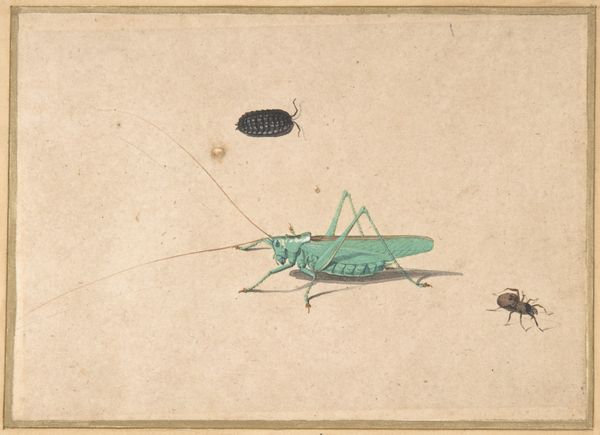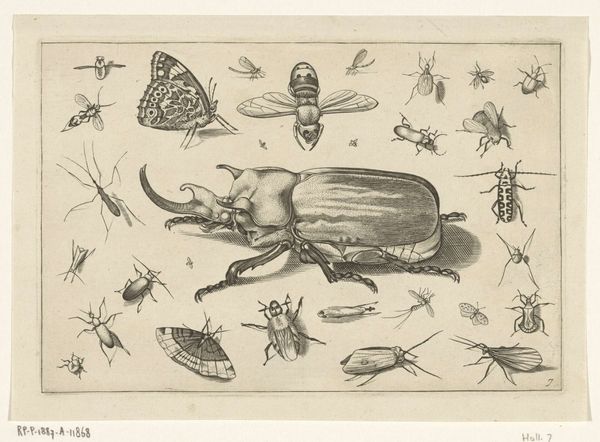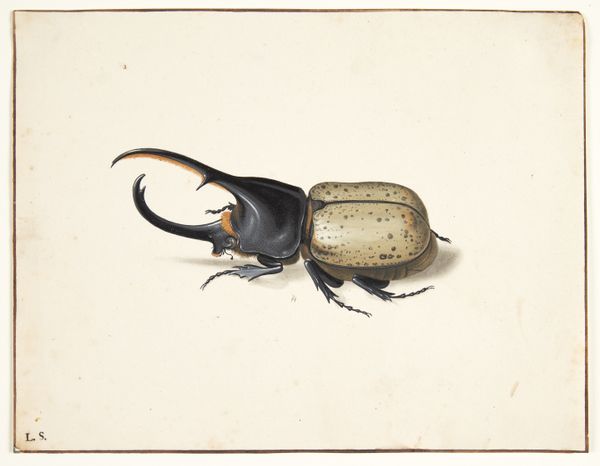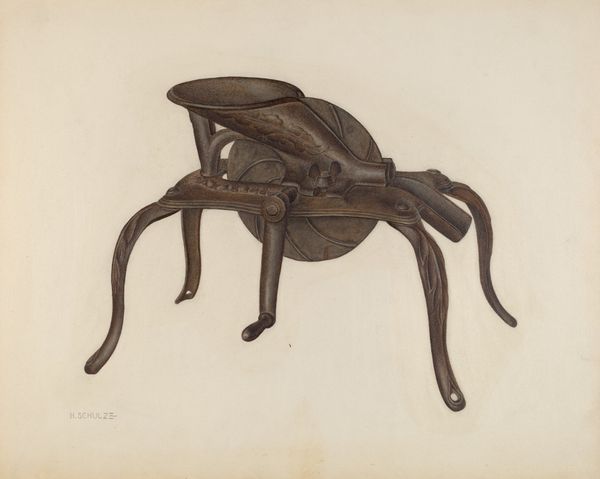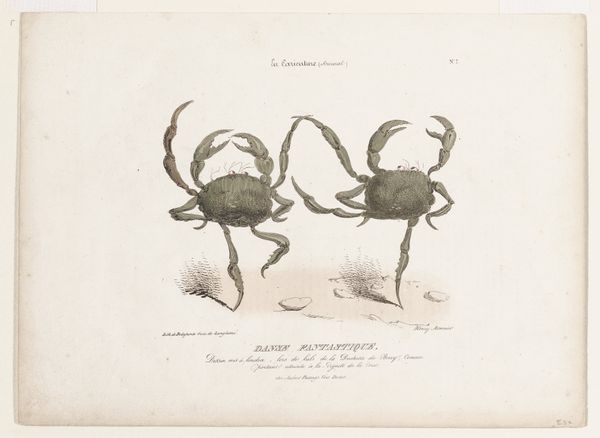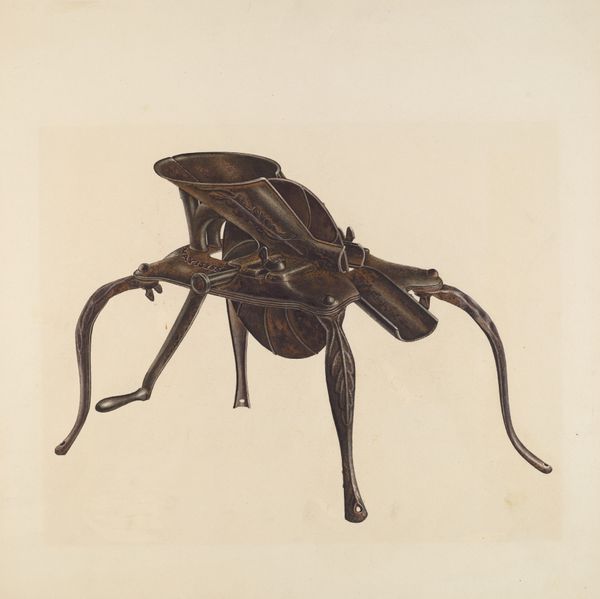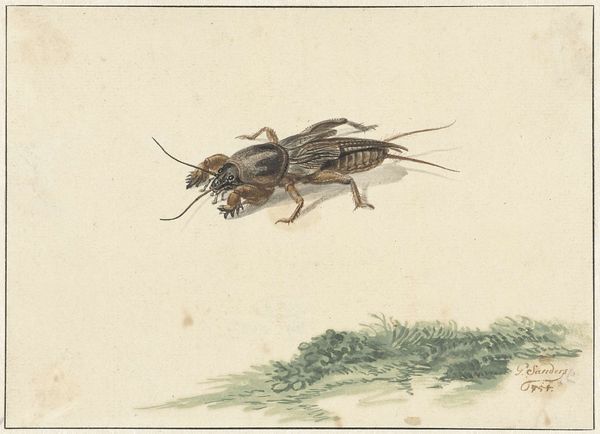
watercolor
#
watercolor
#
watercolour illustration
#
watercolor
Dimensions: height 137 mm, width 166 mm
Copyright: Rijks Museum: Open Domain
Editor: This is "Studieblad met vliegend hert en pas uitgekomen nachtvlinder" by Albertus Steenbergen, made sometime between 1824 and 1900 using watercolor. The detail is really impressive, but what catches my eye is the stark contrast between the stag beetle and the newly emerged moth. What's your take on this piece? Curator: Well, let’s look at the materials. Watercolor allowed for detailed representation, crucial for scientific illustration, which often served practical, even commercial purposes. What sort of labor went into creating watercolors during this period? Consider who had access to these materials, and the market for natural history illustrations. Editor: I see your point. It's not just about artistic skill, but also access to resources and the demand for this kind of scientific record. Curator: Precisely. Now, consider the social context. The 19th century saw an explosion of interest in natural history. Societies and museums flourished, fueling demand for precise, artistic depictions. Who was commissioning or buying art like this, and what did it mean to own and display such works? Editor: So, the value wasn't just aesthetic, but also linked to scientific prestige and social status. It's a signifier of knowledge and possibly even imperial reach? Curator: Yes! This wasn’t art divorced from utility. It participated in the broader project of understanding—and therefore, controlling—the natural world. It also challenged traditional artistic boundaries, elevating observation to an artistic principle. Is the artist trying to create a record of nature, or transform it? Editor: I never thought of it that way, focusing on the production and what it signifies. Thanks! Curator: It reframes the artwork; we appreciate the layers embedded in what appears simple.
Comments
No comments
Be the first to comment and join the conversation on the ultimate creative platform.
